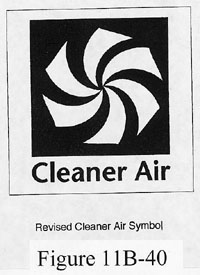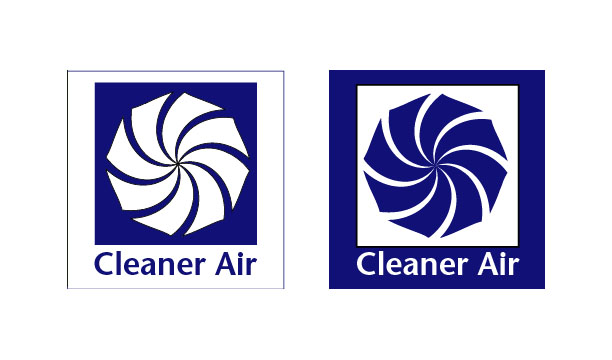 |
Environmental Health Network |
EHN [of California] P.O. Box 1155 Larkspur, California, 94977-0074 Support and Information Line (SAIL) 415.541.5075 |
 |
Environmental Health Network |
EHN [of California] P.O. Box 1155 Larkspur, California, 94977-0074 Support and Information Line (SAIL) 415.541.5075 |
|
May 7, 2000
Office of Technical and Information Services You as individual members have accepted this responsibility. You are to be commended for selflessly having invested your time, intelligence and resources in this extremely important effort. However, there is an urgent, unaddressed issue that I would like to bring to your attention. The Proposed Rule now under review offers no protection to people with chemical and electromagnetic field injuries / sensitivities. The Proposed Rule is NOT, to those of us living with these or related disabilities, just a benign stack of government paper, sadly (again) irrelevant to our needs. It is NOT the case that these Guidelines "do not help people with chemical sensitivities, but they won't hurt either," or that it is OK to stall longer until the "science is complete" or the "jury comes back." The proposed Guidelines include, through accident or error, provisions which further damage hopes of access for people with chemical and electromagnetic field injuries / sensitivities. The results of postponing, once again, the acknowledgement and protection of our access rights will result in serious, unnecessary injury to thousands of us who are already disabled, and in postponing protection for people with other disabilities or health conditions. Attachment "A" is a proposal for voluntary "Cleaner-Air" signage, and a pictogram, that we suggest for voluntary designation of rooms and paths of travel voluntarily made and kept as accessible as is voluntarily possible, by voluntary participants. We propose that the Access Board recommend voluntary use of this sign and pictogram to designate facilities in which voluntary efforts to accommodate us have voluntarily been made. Please study this language and the pictogram and determine if it might be adaptable for use by you within the proposed new Guidelines, and if it seems sufficiently non-threatening to whomever it is that calls the shots for your Board. Then, following are listed several errors in the Proposed Rule that the Board can readily rectify. To assist us, you do not even have to take any "position" regarding our worthiness for A.D.A. and A.B.A. protection. You can simply say it is your intention, or duty, to protect children with asthma or epilepsy if this would be a more palatable position for you to defend. The references are to sections of the current Proposed Rule that will injure us, if adopted. You can lessen this document's deleterious impact on us, if that is something you are willing to do. Reference are from the Federal Register of Tuesday, November 16, 1999, entitled "Part II, Architectural and Transportation Barriers Compliance Board, 36 CFR Parts 1190 and 1191, Americans with Disabilities Act Guidelines for Buildings and Facilities; Architectural Barriers Act Accessibility Guidelines; Proposed Rule."
The Board has, according to this document, evidently taken over from other federal agencies the definition of specifications for "accessible" dwelling units including entrances, accessible routes, elevators, laundry, bathing facilities, kitchens, windows, storage. Buildings for which you can now define "accessibility" include multi-family dwelling units (apartments), hotels, homeless shelters, dormitories, rehabilitation and long-term care facilities, psychiatric facilities, group homes, and transient lodging. As things stand, with the currently fragmented access policies and standards of various Housing entities, at least some of us have had assistance not to be driven from our homes for periods of time, although we cannot safely use the public buildings or workplaces. The problem: the Access Board has accepted authority to define "accessibility" now, even for our shelter. If the Access Board responsibly and comprehensibly represented our interests this would have been a welcome change. As the Proposed Rule is currently worded, that the responsibility to define "accessible" housing now falls to the Access Board spells disaster for us. A serious compounding factor is that respected members of the Accessible Housing advocacy community in the U.S. are working diligently to demolish the H.U.D. Section 811 Program. These good advocates' demands, if met, will result in the one remaining protection for our safety, segregated housing, being made illegal. To date, the Access Board has indicated NO comprehension of the results for us. It is imperative, for us to stay alive, to have housing which is SEGREGATED from people who will invariably, inadvertently or intentionally, assault us with their chemical products and electrical equipment.
Page 62290: 106.5 and Page 62332: F106.5, Defined Terms
Page 62290: 106.5 and Page 62332: F106.5, Defined Terms These alterations are precisely those that constitute barriers to people who cannot withstand indoor air pollution. We are, by this Proposed Rule as it is now written, specifically singled out as "unprotected," specifically and publicly cut out of the fold.
Page 62295: 202.3 and Page 62338: F202.3, Existing Buildings and Facilities, Alterations
Page 62296: 202.3.1 and Page 62339: F202.3.1, Prohibited Reduction in Access It is most particularly the older structures, or non-remodeled, non-fixed up, areas of a facility, where we have any chance whatsoever of accessing services, an exam by our doctor, a counseling appointment, a shower, a bed, or conducting any other business. In other words, a safe(r), older facility, once remodeled to the standards required for new construction, because nontoxic products and procedures are nowhere required or even suggested, has just become one more "up-to-ADAAG standards" facility that has been made inaccessible to us.
Page 62296: 202.3.2 and Page 62339: F202.3.2, Extent of Application No matter that there may be only one unsprayed, uncarpeted room, that's barely accessible, in a homeless shelter or hospital, for people with disabling sensitivities to chemicals in an entire city or state. The current proposed language says to buildings' owners and managers "Go ahead, remodel this one old-fashioned, aired-out room too; these people's access is not protected, they have no legal defense. Paint, spray insecticide, and install carpet and new particleboard cupboards all you like. These folks will be driven out, but don't worry, we are looking the other way and no one of consequence will notice a thing." The section on accessibility to Federal facilities parallels the first section, except that the stakes for us are higher. Thank you for any assistance on these issues. Sincerely, Susan R. Molloy, M.A.
Cc: ----------- Attachment:


Sharon Toji accesscomm@earthlink.net
EHN's homepage www.ehnca.org . | ||||||||||||
Comments? (Barb's email is no longer valid, please contact EHN). Please put WWW in subject line. Thanks.
Return to Index of Letters To Inform and Of Rebuttal
http://ehnca.org/www/actnletr/acletin.htm
Please check back often as we are always adding valuable links to our pages of Links.
As with all organizations, EHN depends upon your contributions of time and energy,
as well as your membership support.
http://ehnca.org/www/ehnhompg/membship.htm
2/1/2000
The Environmental Health Network (EHN) [of California] is a 501 (c) (3) non profit agency and offers support and information for the chemically injured. HomePage is http://ehnca.org/ehnindex.htm